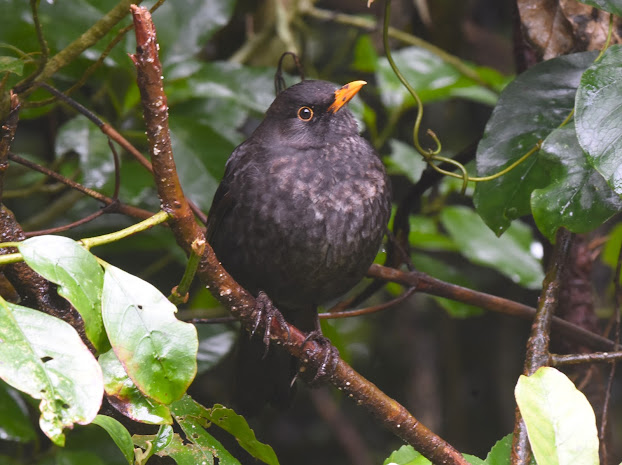The Naturalized Colonists of the Birding World
the Eurasian Blackbird
While studying my birds of New Zealand, I noticed a WHOLE lot of birds from another island I visited several years back....Britain! And it made sense since they colonized New Zealand after the Māori did. The same thing has happened to countless other island nations. If we are looking at more than just humans, we also find that birds also brought over by British colonists found a way to naturalize just like their mammal counterparts.
the Common Chaffinch
It inevitably happens. The colonists wanted to see "their" birds around them for their bird song and to bring a familiarity to the foreign landscape. Caged birds escaped or hitched a ride on boats. It has happened on Hawaii, Tahiti and many other islands. The Common Myna is VERY common on Maui. And turns out it was the first bird I saw in Aukland as our plane landed. Thankfully, it's not widespread on the north island like it was on Maui.
a Song Thrush that looks a bit like a Hermit Thrush
And I have to admit, I was a bit excited revisiting several British birds again like the Song Thrush and the Yellowhammer!
Yellowhammer
I helped Heidi with the ID on my absolute favorite intruder, the Dunnock. She couldn't tell the House Sparrow from the Dunnock. So we spent some time observing these sneaky birds.

Dunnock
While I was in Wales and England, I saw all of these birds well but in poor lighting. The Common Chaffinch is such a beautiful bird. I read that this bird will now be split into 5 different species so watch your ebird checklist.
Common Chaffinch
Another favorite was the Greenfinch. Their numbers seem to be declining in Britain. I recall that I only saw this species once while birding with my friend Steve. In Wellington, they were everywhere and often at my friend's feeders in her yard. It's interesting to note that several species on the various island nations have foreign birds that have naturalized well to their climates and have strong populations, but in their native ranges, some of these same bird species have declined in large numbers creating somewhat of a "safety net".
European Greenfinch
There was no shortage of Blackbirds. They were the most numerous and everywhere. And they ate apple cores!
I have to admit that it was cool to revisit these birds again. You never know if you'll get to see certain birds again. And by traveling, you see how people and history have had an affect on the natural environment.
Not mentioned in this report are Rock Pigeons(everywhere around the world), Canada Geese(wtf!?!), Mallards(terrible terrible!!!!!! They hybridize with every duck on this planet. In fact, Pacific black ducks have hybridized with them! as have Hawaiian, Mexican, American black, and on and on it goes. A lot of these species are endangered because of the invasion of the Mallard.), Graylag Goose(British), Mute Swan(also bad because they can hybridize with Black Swans), California Quail!!!(I saw a male at Zealandia!), Wild Turkey, Indian Peafowl, Red Junglefowl, Brown Quail, Ring-necked Pheasant, Lesser Redpoll, Eurasian Coot, Rook!(I'm not sure there are any around anymore...but that's a cool bird! I checked because it was a favorite of mine from Wales), Eurasian Skylark, Common Myna, House Sparrow and even stray Emus! I'm sure there are more, but you get the idea. Lots of people from all over thought it was a great idea to fill New Zealand with their birds:) Today stricter laws are enforced around the world, but what is done is done. Until next time....










A very interesting post Chris and seeing the species introduced by British Colonists. Here in England we used to have Greenfinches regularly on the garden feeders but they are a rare sight these days. You are right so many bird species and also mammals and insects introduced to other countries have caused much havoc with native species. We may have learnt lessons but still invasive species via the sale of plants etc appear.
ReplyDeleteIt's amazing how it happens all over the world. In the US, we have the Red-crowned Parrot in CA, TX, and FL. But in their native range in Mexico, they are threatened due to poaching. The birds reflect our past. It's interesting and sad. In New Zealand, they are killing the invasive Hedgehogs. But in Britain, they are trying to save them. I wish they could just send them on a boat back to where they belong.
Delete